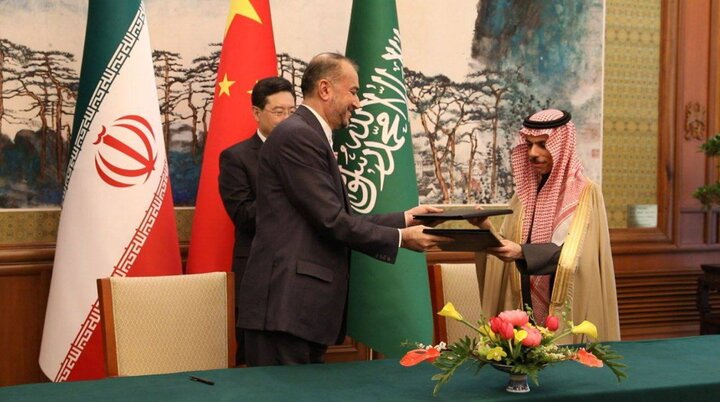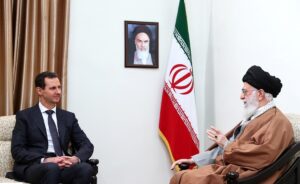The Beginning of a New Era in the Middle East?

On March 10th, Iran and Saudi Arabia surprised many by announcing the re-establishment of their diplomatic ties. The following re-opening of Iran’s embassy in Saudi Arabia on April 12th formalized this shift in the relationship between the two countries, establishing political relations after a seven-year diplomatic shutdown between the two countries, which was caused when demonstrators attacked the Saudi embassy in Tehran in January 2016. Nonetheless, different actors, interests, and concerns fostered this softening of tensions.
The re-enactment of diplomatic ties between Saudi Arabia and Iran could have lasting implications for the Middle Eastern countries. Saudi Arabia and Iran seek to water down their political and religious divisions to strengthen both their regimes and geopolitical status. Moreover, the role of China in this diplomatic rapprochement is an example of the growing Chinese influence in the region, which could reshape power dynamics in the Middle East.
The influence of the Iranian-Saudi rivalry on the Middle East
Iran and Saudi Arabia are two of the most powerful countries in the region because of their regimes’ stability, oil resources, and geopolitical influence in the Middle East. Many countries have suffered from civil wars or regime change in recent years –Syria, Lebanon, and Iraq just as examples– but Iran and Saudi Arabia have been stable since the 1979 Iranian Revolution, allowing them to strengthen their geopolitical power. Furthermore, many unstable regimes in the region have relied on Iranian or Saudi support to establish or stabilize themselves. For instance, Saudi Arabia helped the Bahraini government resist a popular revolution in 2011. At the same time, Iran has provided military assistance to Assad’s regime since the outbreak of the Syrian civil war.

Religious and strategic tensions fuel the Saudi-Iranian political rivalry. While both countries have established sharia –Islamic law– as the basis of their legal system, their religious differences boosted tensions. Iran being a Shia Muslim country, and Saudi Arabia a Sunni Muslim one, their different practices and interpretations of their sacred text –the Quran– have fostered animosity for generations because both countries see themselves as the leader of the Muslim world. Consequently, Middle Eastern countries with either Shia or Sunni majorities look towards Iran or Saudi Arabia for political support. Iran and Saudi Arabia’s roles as respective leaders of the Shia and Sunni worlds led them to engage in numerous proxy wars between each other. For instance, Iran has been a staunch military supporter of the Assad government in Syria since the beginning of the Syrian civil war in 2011. On the contrary, Saudi Arabia has backed revolutionary insurgencies in the country. Both countries have also fought a proxy war in Yemen in the last decade, with Saudi Arabia backing the Yemeni government and Iran providing military aid to the Houthi movement.
Therefore, the two countries’ security cooperation agreement encompassing diplomacy, trade, investment, culture and so on, is a political landmark for the Middle East in terms of diplomatic appeasement.
Different interests are behind these renewed Iranian-Saudi relations
Iran seeks to achieve domestic-level interests, while Saudi Arabia pursues objectives at the international level. Iran looked for diplomatic relief after months of popular protest in the country, which was triggered after the police killed 22-year-old Mahsa Amini for refusing to wear the mandatory veil in public in September 2022. The event sparked the nationwide “Women, Life, Freedom” movement across Iran and in the Iranian diaspora. This protest dramatically weakened the regime and showed the antagonistic perception many Iranians share of the Islamic Republic. Consequently, the Iranian regime enhanced diplomatic ties with other nations to strengthen its stability and international prestige. The regime appeared quite weakened on the international stage after many countries —Canada, the European Union, and the United States imposed additional sanctions on Iran. For instance, Canada imposed sanctions after the Islamic Revolutionary Guard Corps’ repeated human rights violations. Therefore, Iran strengthened its regional relations to stabilize the Islamic Republic at the domestic level.
Saudi Arabia is also looking for new partners to reaffirm its international status. It saw its prestige significantly undermined –especially among Western nations– after journalist Jamal Khashoggi’s assassination in 2018, which led the US to be vocal about its disapproval of Saudi Crown Prince Mohammed bin Salman’s policies.

In recent decades, Saudi Arabia has been pretty reliant on the US and other Western governments for its political credit. However, it now seeks to be more strategically independent from American interests, deciding instead to foster cooperation with Iran, a historical American enemy. Hence, Saudi Arabia is increasingly turning to Iran’s ally, China. The realization of the Iranian-Saudi cooperation agreement would mean that the two countries strengthen their regimes and affirm themselves as regional leaders. Furthermore, the Iranian-Saudi appeasement could help some countries to put an end to their political deadlock. Iran and Saudi Arabia’s rivalry boosted instability and economic paralysis in the region –especially in Lebanon and Iraq– because of proxy economic and military wars. Therefore, more peaceful relations between Iran and Saudi Arabia could foster more stability in neighbouring countries.
The rise of Chinese influence in the region
The re-establishment of Saudi-Iranian diplomatic ties is a “lose, lose, lose” event for the US and a sign of increasing Chinese power in the Middle East. The political rapprochement is a major downturn to American interests because its close Saudi ally is enhancing ties with a rival regime. This power dynamic also aims to reduce Western nations’ influence in the region, since Saudi Arabia increasingly moves away from Western strategic interests by enacting diplomatic ties with Iran. Moreover, China fostered this agreement by hosting the negotiations between Saudi Arabia and Iran. China’s role in this agreement illustrates the country’s growing involvement in international affairs, both in terms of having an active role in global governance and extending its zone of influence. China wishes to realize its global ambitions by developing political, economic, and security ties in the Middle East. The expansion of Chinese political power is not limited to the Middle East –for instance, it also developed relations with Honduras this year.
China aims to bolster diplomatic relations between Saudi Arabia and Iran, with the goal of reaching new Middle Eastern actors and interests. The US has a decades-long history of influence or domination on various Middle Eastern countries. Some regional leaders –such as Egypt, Israel, and Saudi Arabia– are historical American allies and others –Iraq and Afghanistan– have been occupied by the US until recently. However, things may begin to change. China wants to strengthen its role in the region and has lots of opportunities to do so. Many Middle Eastern countries –Lebanon, Iraq, Turkey, and Syria being prime examples– have experienced significant political instability in the last few years. This presents China with opportunities to seize economic and strategic prospects in the Middle East by building new partnerships with some countries. Moreover, many regional countries are increasingly seeking new alliances because of their political and ideological divergences with Western countries. Thanks to its economic and strategic powers, China appears most attractive. In addition, China can also count on its Russian ally’s role as a major stakeholder in the Middle East. Still, Russia has desperately relied on Chinese support since it invaded Ukraine, while contributing to China’s growing political, economic, and influential power in the Middle East.
The re-establishment of diplomatic ties between Iran and Saudi Arabia is a political landmark for the Middle East. The decades-long rivals seek to water down tensions to achieve different interests. Hence, this cooperation could have substantial implications for the two countries’ neighbours. China is the major force behind the Iranian-Saudi rapprochement, which shows its growing influence in the region and how it could shape regional politics’ next decades. However, this deal faces many challenges as ideological and religious divisions still prevail.
Featured image by Mehr News Agency is licensed under CC BY 4.0
Edited by Arezo Farah.
